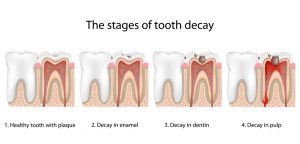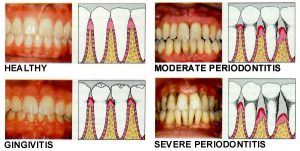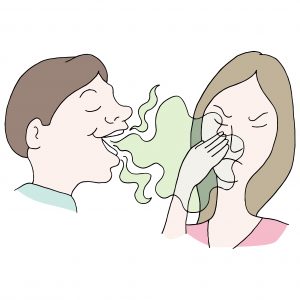Dental Disease Is Silent
Don’t wait until it hurts!
Dr. Robert K. Faber and Mission Laser Dentistry in San Juan Capistrano know that pain is not a good indicator of presence or absence of dental disease. That is, cavities are generally painless until they have progressed quite deep within the tooth. When the patient has pain and the cavity is deep, the necessary treatment is often 10-20 times more expensive than if the cavity were treated in its early stage. Additionally, teeth with extensive treatment have a worse long-term prognosis than teeth that have been treated conservatively. In simple terms, cavities treated early might cost only hundreds, yet cavities that are advanced to the point of causing pain often cost thousands to treat.
There is another good reason for treating cavities early. Have you ever heard the expression “One bad apple spoils the bunch”? Well cavities are to the mouth what the bad apple is to the bunch! This has to do with the b acterial flora that cause tooth decay. You see, there are thousands of different kinds of bacteria making up the balanced oral bacterial population, yet only a few strains out of the thousands are the type that cause tooth decay.
acterial flora that cause tooth decay. You see, there are thousands of different kinds of bacteria making up the balanced oral bacterial population, yet only a few strains out of the thousands are the type that cause tooth decay.
Allowing a cavity to exist and grow untreated essentially tips the balance in favor of the “bad guys”-meaning that one cavity could give rise to many others.
Periodontal Disease Is Silent
Periodontal (gum) disease is another common pathological condition of the mouth that should be treated early-before pain starts. Though painless in its early stages, periodontal disease is defined by the loss of bone and gum tissue that support the teeth. Similar to tooth decay, it is largely a disease process driven by “bad” bacteria. The bone destroyed by periodontal disease never grows back, but treatment is available that can stop or dramatically slow down this destructive, yet painless process. When a critical point is reached and the tooth’s root is no longer firmly embedded in bone, teeth affected by periodontal disease must be extracted. Up until this critical point, the patient may not be aware of any discomfort or problem. When the disease does become painful, an abscess is usually occurring. Periodontal abscesses often arise nearly overnight and can be quite difficult to treat.
Periodontal disease usually produces foul breath and gum recession-both of which may/may not be identified by the individual afflicted. But remember, pain does not usually accompany the condition until it is quite advanced. Periodontal patients are at increased risk by cigarette smoking, diabetes and poor oral hygiene. The only way to know if you have periodontal disease is to have a professional examination.
Besides increasing cost of treatment and the inherent benefit of saving ones natural teeth, medical and dental science have concretely determined that there is link between untreated dental disease(cavities, abscesses, and periodontal disease) and strokes and heart attacks. Perhaps this is the most compelling rational for seeking dental care/diagnosis/treatment in the absence of pain. Cavities and periodontal disease may indeed be “silent” triggers in individuals who suffer heart attacks and strokes. Don’t let the cost of your care escalate, risk tooth loss and put yourself at higher risk of cardiovascular disease (or even death) just because you have no pain. Dr. Faber and Mission Laser Dentistry in San Juan Capistrano encourage you to see your dentist twice a year. Don’t’ wait until it hurts!




